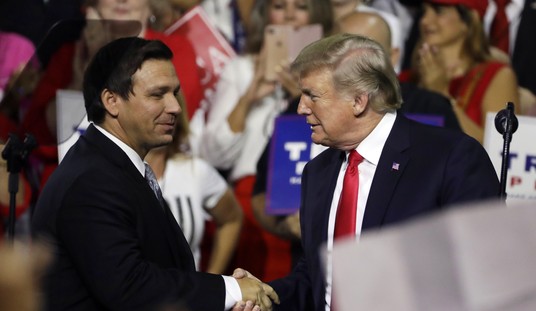Politicians sure do love one-size-fits-all solutions, don’t they? One size fits all for any number of things, from gun laws to speed limits. But one of the worst ideas in recent history comes in two parts: heavy subsidies to push electric vehicles and new taxes to replace losses in gas tax revenue caused by the push for electric vehicles. This situation is like the Energizer Bunny on crack; it just keeps getting dumber, and dumber, and dumber.
As usual, the pols neglect one thing: What works in Massachusetts or Delaware won’t work in Texas, Wyoming, or our own Alaska. This latest idea, a Vehicle Miles Traveled (VMT) tax, is no exception.
EVs get massive tax subsidies to convince people to buy them, but their owners don’t pay gasoline taxes, for the obvious reason that they never have to fill up. The more EVs on the road, the less revenue the gas taxes raise.
So the policy geniuses in Washington have a solution: Impose a per-mile tax.
Some states are already experimenting with “vehicle miles traveled” taxes, and the $1 trillion bi-partisan infrastructure bill includes $125 million for state and local pilot programs to test a national VMT fee.
A VMT sounds reasonable, right? After all, every driver imposes costs on roadways. And a mileage tax would capture all drivers, no matter what fuels their cars.
But look more closely, and the VMT tax is perhaps one of the most insidious tax ideas ever devised.
I haven’t seen a tax in years that didn’t seem insidious, but I will say that I generally favor (well, less vigorously oppose) consumption-based taxes. The idea behind the tax on gas and Diesel fuel, after all, is that those taxes go to maintain public roads and so are paid by people who use those public roads. Makes sense, right? But this VMT idea is a little more complicated — and, frankly, unworkable without a massive intrusion into people’s privacy. Here’s how it would work:
The gas tax is simple. A relatively small number of large fuel suppliers pay the tax, the costs of which are then passed on to retailers. But by definition, a VMT means collecting money directly from hundreds of millions of owners of hundreds of million cars. How?
One idea is to force motorists to have their odometers checked regularly, where they’d then be assessed a fee. But that would simply encourage widespread odometer fraud, which is already a problem. The National Highway Traffic Safety Administration estimates that more than 450,000 cars are sold each year with false odometer readings. You’d also need an army of IRS agents to audit the millions of odometers.
Another option is to use an electronic-toll-style-collection system, which would require every car to come with a transmission device. Still another is to put GPS devices in every car, to track each car’s movement.
Let’s take a moment to unpack all that.
First, the gas tax. It’s pretty simple; the infrastructure is already in place. So we really don’t need to examine that process.
Second, the odometer check. Most odometers now are digital, and I honestly have no idea how easily they are spoofed, but I’m guessing it’s possible. I know back in the day, when I was a young man, most odometers reset at 100,000 miles and were mechanical, being driven by a cable that attached to the transmission; spoofing those was as simple as unplugging the odometer cable, attaching an electric drill to the cable, and running the meter ahead past the century mark — most wouldn’t go back — from, say, 88,000 miles to 56,000 miles. But no matter how this works today, someone, somewhere, will find a way to spoof it. And what about the cost? How much will this check cost, and how often will it be required? Annually? Weekly? Monthly? Someone living in Raritan, New Jersey, may be able to get this done at the service station on the corner, but a rancher in the Medicine Bow area of Wyoming may have to drive two hours.
Third, the toll collection system. It’s unclear how this would work. I’ve used similar devices on toll roads; a lot of rental cars come with them, and when we lived in the Denver area, we (voluntarily) used one to get around on the E-470 loop road. But if this works like those, it could be defeated by the simple expedient of taking it out of the car. If it’s built in to the car, how will that work? Will owners of older cars be required to have these units installed? At what cost? At whose cost?
Finally, the GPS solution. To this, I can only say not only no, but hell no. Having any or all levels of government being able to track my every move, to determine my location at any given time? What could possibly go wrong with that? I don’t want to find out what the answer to those questions actually would be.
Those things aren’t my biggest concern with this issue. The real problem is this: All of these extra taxes will most assuredly not replace the gas tax. The VMT won’t be levied only on electric vehicles. The VMT will be in addition to the gas tax. Taxation schemes, after all, only add to the existing taxes, never replace or reduce them. Make no mistake about that.
Electric vehicles may be a good idea for some. They won’t be for others. Out here in our Alaskan homestead, distances traveled for any household needs can be considerable, and our Arctic winter temperatures will likely render an EV hors de combat. The answer for us isn’t jamming the square EV peg in the round Alaska transportation hole, but rather expanding our already-ample resources to keep things moving.
Even so, I can see no objection to electric vehicles per se, as long as they are an option, not a requirement; as long as I am faced with no extra taxes to pay for them, and as long as my tax dollars are not spent subsidizing them.













